The latest updates to the Garmin cycling computer range are the Garmin Edge 540 and Edge 840.
The new bike computers join the Garmin Edge 1040 in providing Garmin's latest functionality and the option of solar power collection to increase their battery life.
But how else do these three Garmin computers compare? In this article, we explain everything from the differences in solar charging to why you would choose one over the other.
Screen size, touchscreen and buttons

The Garmin Edge 1040 is the brand's range-topping cycling computer. It has a huge 3.5-inch touchscreen and a profile on your handlebars to match. Most functions are controlled via the responsive touchscreen, although there are two buttons on the base of the case and an on/off button on its side.
The newer Edge 540 and 840 are much more compact, both having a 2.6-inch screen. The Edge 840 has a touchscreen and an array of seven buttons, so that most functions can be carried out with either, while the Edge 540 is controlled by its seven buttons alone.
A screen that solar charges the computer is an option for all three units, with a thin solar coating over the data area and brown-coloured zones top and bottom that collect solar power more efficiently.
Unit size and weight

The smaller Edge 540 and 840 are both 85.1x57.8x19.6mm in size. Their weights are slightly different: 80.4g for the Edge 540 and 84.9g for the Edge 850. Adding solar charging increases the weight, in each case by around 4g.
The Edge 1040 is 32.5mm longer and also slightly wider and deeper, with a case size of 117.6x59.3x20mm. It weighs 126g, with solar charging adding an extra 7g.
Battery life
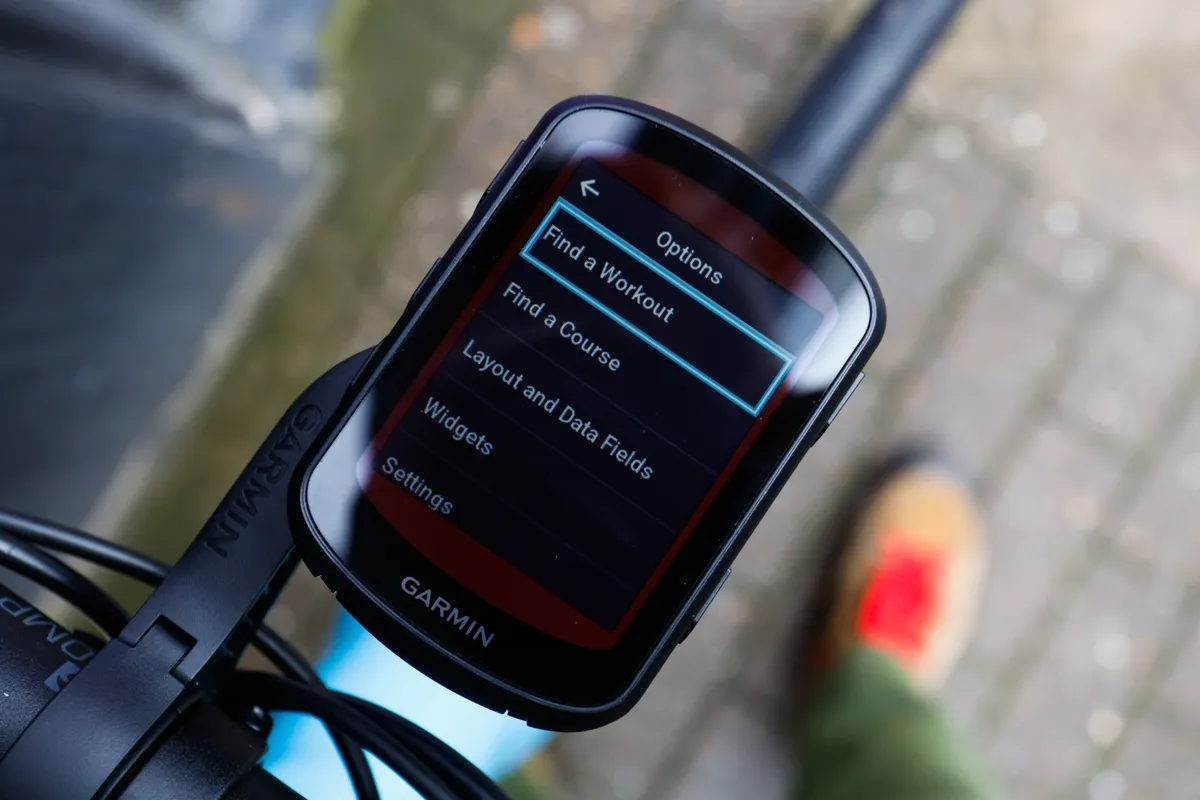
Claimed battery life without solar charging is 26 hours for the Edge 540 and 840, and 35 hours for the Edge 1040. With solar charging, this can be extended to a claimed 32 hours for the smaller units and 45 hours for the Edge 1040, although see our caveats on solar charging later in this article.
Use power save mode and the Solar units' battery life is claimed to be increased to 60 hours and 100 hours respectively.
Memory
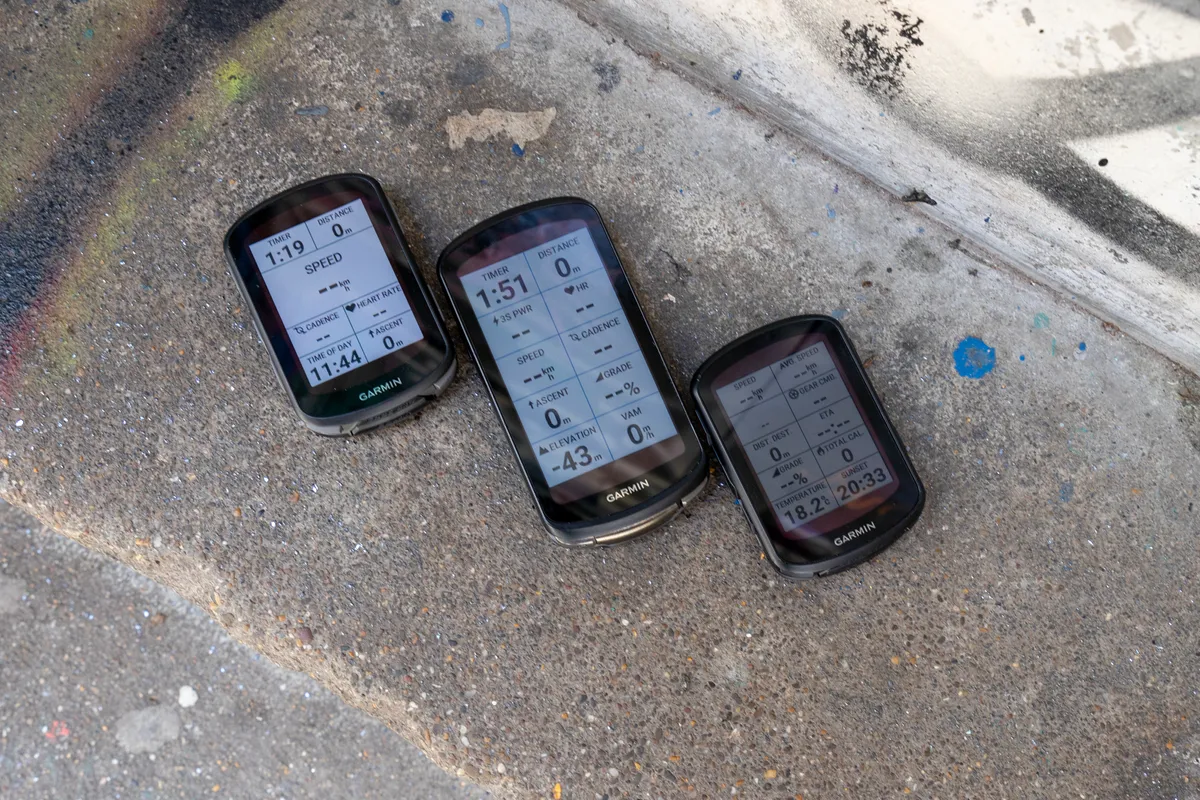
The memory size differs between the three computers: 16GB for the Edge 540 Solar, 32GB for the Edge 840 Solar and 64GB for the Edge 1040 Solar. They all store the same amount of ride data, but the larger memory capacity is used to enable a larger map area to be stored.
Garmin Edge 1040, 840 and 540 summary comparison
Here’s a summary of the Edge 40-series computers’ physical dimensions, Garmin’s claimed battery life, other features and prices.
| Edge model | 540 | 840 | 1040 |
|---|---|---|---|
| Unit size | 57.8x85.1x19.6mm | 57.8x85.1x19.6mm | 59.3x117.6x20mm |
| Screen size | 2.6 inch (66mm) | 2.6 inch (66mm) | 3.5 inch (88.9mm) |
| Screen resolution | 246x322 pixels | 246x322 pixels | 282x470 pixels |
| Weight solar | 84.9g | 88.9g | 133g |
| Weight non-solar | 80.4g | 84.8g | 126g |
| Touchscreen | N | Y | Y |
| Claimed battery life solar | 32 hours | 32 hours | 45 hours |
| Claimed battery life solar, power save | 60 hours | 60 hours | 100 hours |
| Claimed max solar gain per hour | 25 min | 25 min | 42 min |
| Claimed battery life non-solar | 26 hours | 26 hours | 35 hours |
| Memory | 16GB | 32GB | 32GB (64GB 1040 Solar) |
| Price solar UK | £449.99 | £519.99 | £629.99 |
| Price non-solar UK | £349.99 | £449.99 | £519.99 |
| Price solar US | $449.99 | $549.99 | $749.99 |
| Price non-solar US | $349.99 | $449.99 | $599.99 |
| Price solar Europe | €499.99 | €599.99 | €749.99 |
| Price non-solar Europe | €399.99 | €499.99 | €599.99 |
| Price solar Australia | AU$749 | AU$879 | AU$1299 |
| Price non-solar Australia | AU$599 | AU$749 | AU$1049 |
Solar charging is more efficient for the Edge 1040
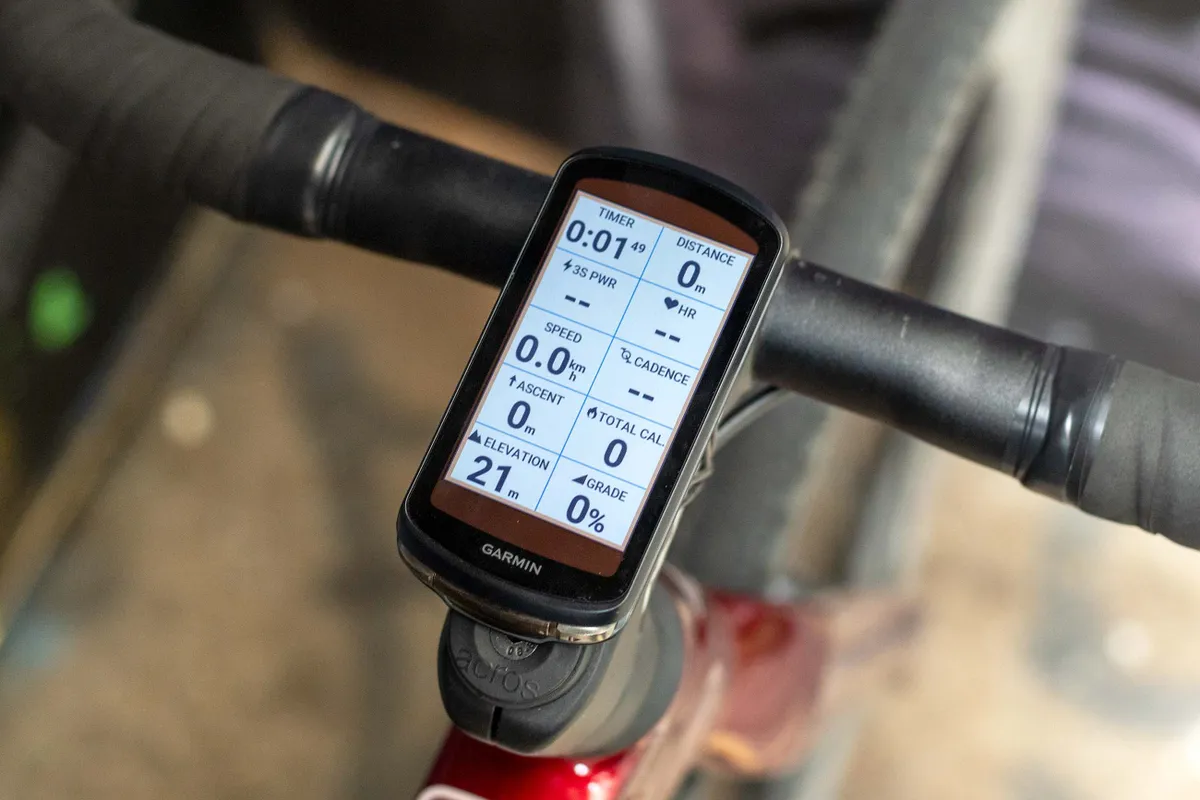
The big feature update with the launch of Garmin’s 40-series computers is the inclusion of solar charging. For all three, it’s an option rather than a built-in feature. You can opt out and choose a non-solar version from the Garmin range and save some money in the process – up to £100 depending on the model.
Solar charging provides useful additional battery life – at least if you’re riding somewhere sunny.
Garmin tells you how much battery life you’ve gained on your ride. On a grey winter day in the UK, I found this minimal – a couple of minutes per hour. But during the summer, the Edge 1040 Solar told me I was regularly adding around 15 minutes of charge per hour, even with mixed shade from trees.
The larger screen of the Edge 1040 makes its solar charging more effective than the Edge 540 and Edge 840 Solar. Garmin quotes a maximum solar gain of 42 minutes per hour for the Edge 1040, against 25 minutes for the smaller units.
The solar collector makes the screen dimmer in the solar than the non-solar units, so you might find you need to increase the screen brightness – which rather defeats the benefits of solar charging.
Whether you need solar charging also depends on the type of riding you do. All three Edge units offer over 24 hours of claimed battery life, even in non-solar format. The Edge 1040 Solar pushes that up to a claimed 45 hours, or 100 hours if you turn on power save mode.
This is a double-edged sword though. It’s easy to get complacent about charging; on one ride, the Edge 1040 Solar gave up on me mid-ride because I hadn’t bothered to check its battery level before heading out.
Different memory size but the same data capacity
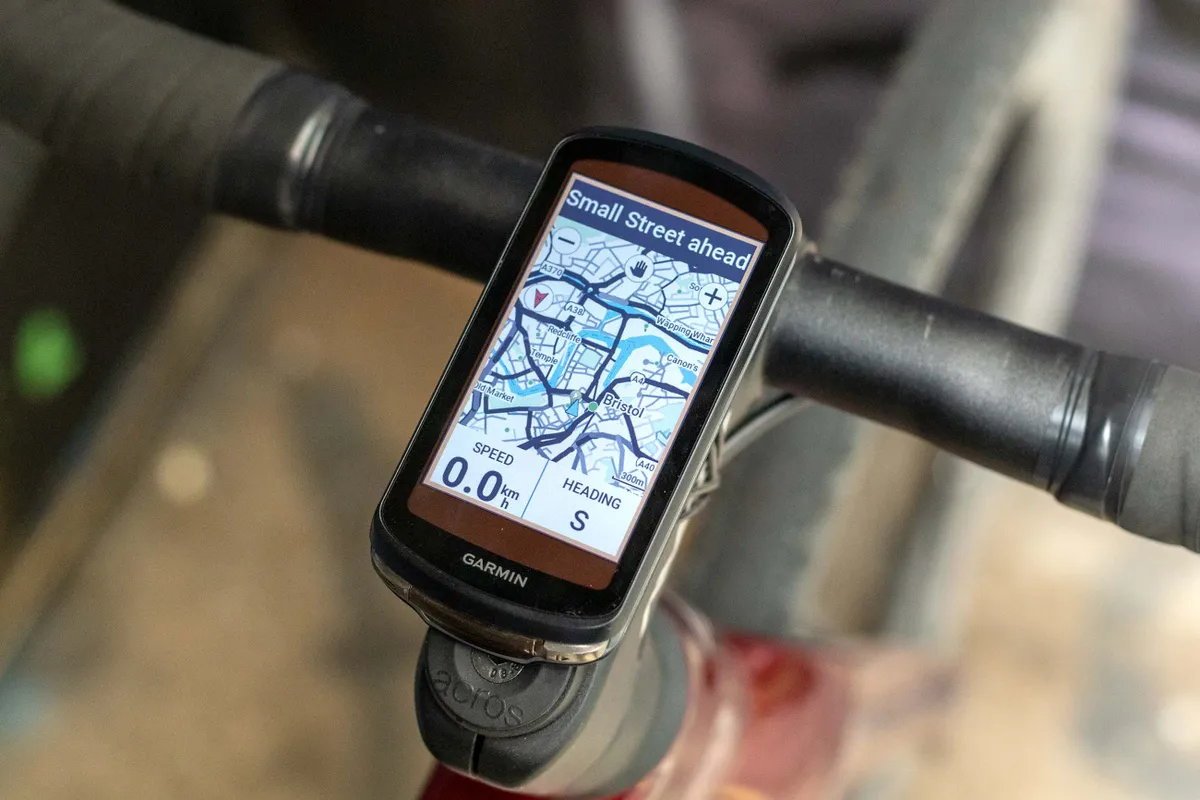
The amount of on-board memory differs between the Edge 540, 840 and 1040, with the 540 getting a 16GB memory chip, the 840 32GB and the 1040 64GB. Garmin says all three computers can store the same amount of data despite their different memory sizes: 200 locations/waypoints, 100 courses and up to 200 hours of ride history.
The larger memories of the Edge 840 and 1040 enable them to keep more map data on the device though. So if you frequently travel to different areas to ride, it may be easier to manage the map storage with the larger memory. However, maps are loaded up for a whole country or region, so this is unlikely to be significant unless you're travelling to a different continent.
All three of the Garmin computers get a GPS fix from the same range of satellites and support the latest multi-band GNSS, which can allow a more accurate location fix in challenging terrain, such as under tree cover or when riding between tall buildings. They all have the same array of other sensors, including a barometric altimeter, a gyroscope and an accelerometer.
Same connectivity options
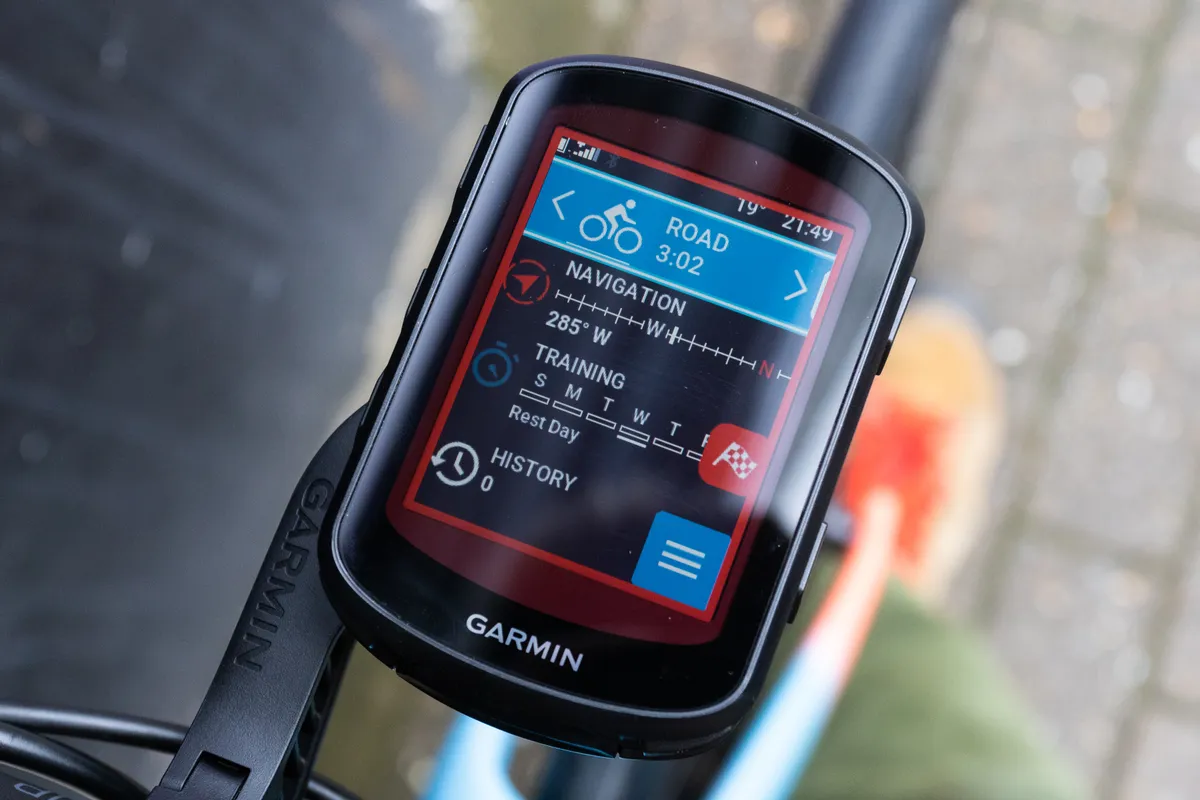
Much of their other functionality is shared too, including Bluetooth, ANT+ and WiFi connectivity, enabling them to connect up to the full range of external sensors, including a bike radar and a power meter. Bluetooth also allows all three to link up to a smartphone to transmit data and receive alerts as you ride. WiFi allows for fast data download, upload and firmware updates.
Newly introduced with the Edge 540 and 840 and now also available on the Edge 1030, ClimbPro works on the fly, not just on pre-planned routes. This gives you a profile of an ascent, and tracks you as you progress up it when you’re not following a defined course.
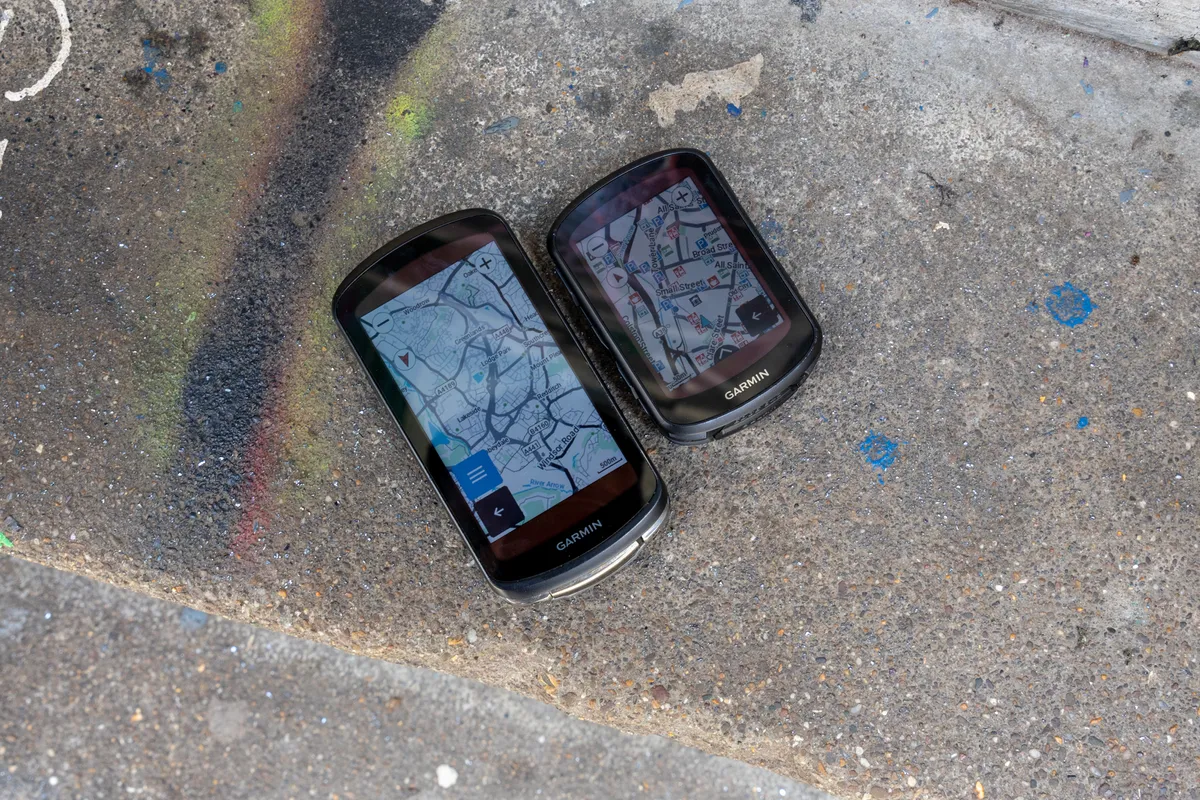
That’s functionality that was introduced on the Hammerhead Karoo 2 around a year earlier and is now also available in the Wahoo Elemnt Bolt and Wahoo Elemnt Roam cycling computers as well.
There’s useful functionality around the Edges that’s also common to all three. They all use the Garmin Cycle Map and have popularity routing, so you’re less likely to find yourself on a dual carriageway when there’s a nice lane that goes in the same direction.
All three integrate with Trailforks for off-road routing and support Garmin’s Grit and Flow metrics. There’s also Climb Explorer, which helps you to seek out climbs near you.
Same links to Garmin Connect
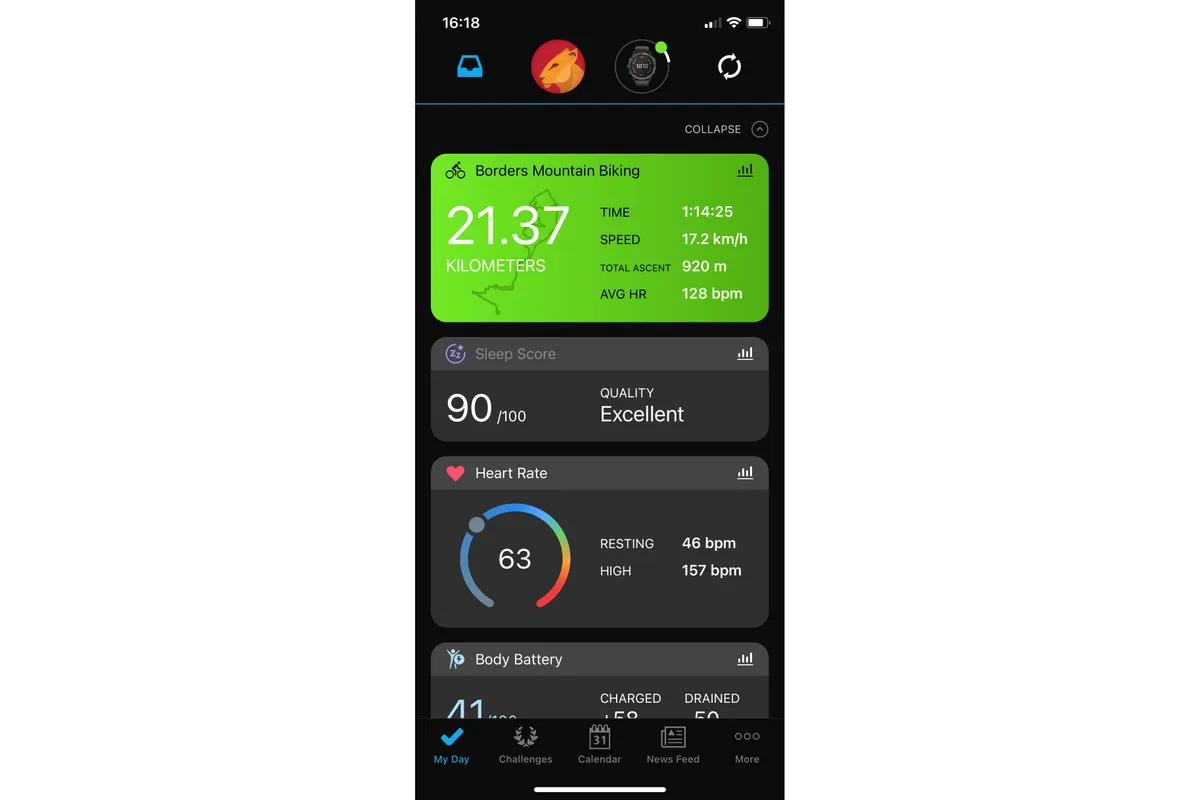
Device functionality is pretty much identical between all three units and they all link up to the Garmin Connect cycling app.
Garmin Connect is still by far the most comprehensive free analysis app available and includes Garmin’s own version of much of the functionality that paid-for fitness apps provide.
Garmin positions its functionality as a coaching aid, providing training plans based on your objectives and recommended workouts. These are available on Garmin Connect and can be downloaded to any of the three devices to follow.
All three track your stamina as you ride and provide an assessment of how much you may have left in the tank. They’ll even prompt you when to eat and drink to keep yourself fuelled.
They’ll also tot up your training load and tell you what to concentrate on to meet your previously input objectives, or when it’s time to rest up.
So why would you choose one Edge over another?
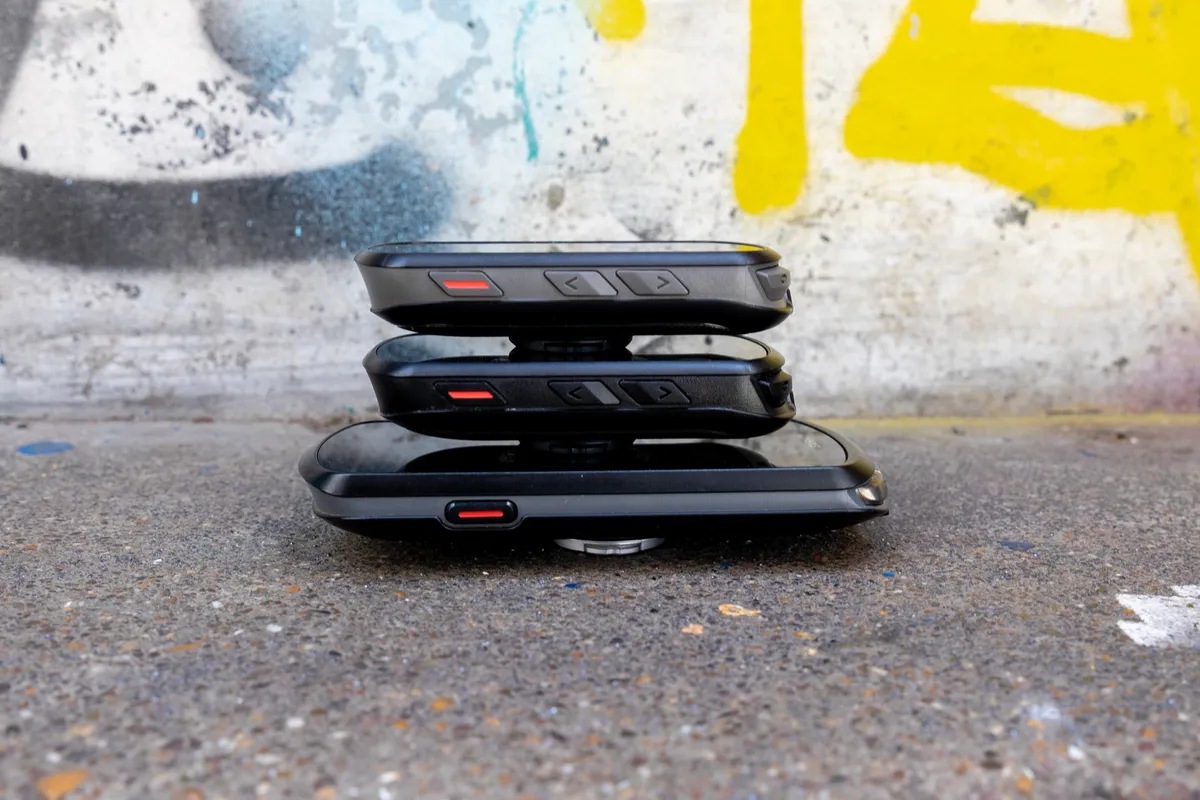
First up, do you want a touchscreen? If so, the Edge 540 is ruled out. Then it’s a question of whether you want the larger screen of the Edge 1040.
This can be useful when following routes and scrolling around maps, because it gives you a larger field of view; it’s easier to spot that the trail you’re on is heading for a cliff, for example.
It’s also easier to hit the correct button when riding, particularly if you're wearing heavy winter gloves. Actions such as pinch-to-zoom are easier on a larger screen too.
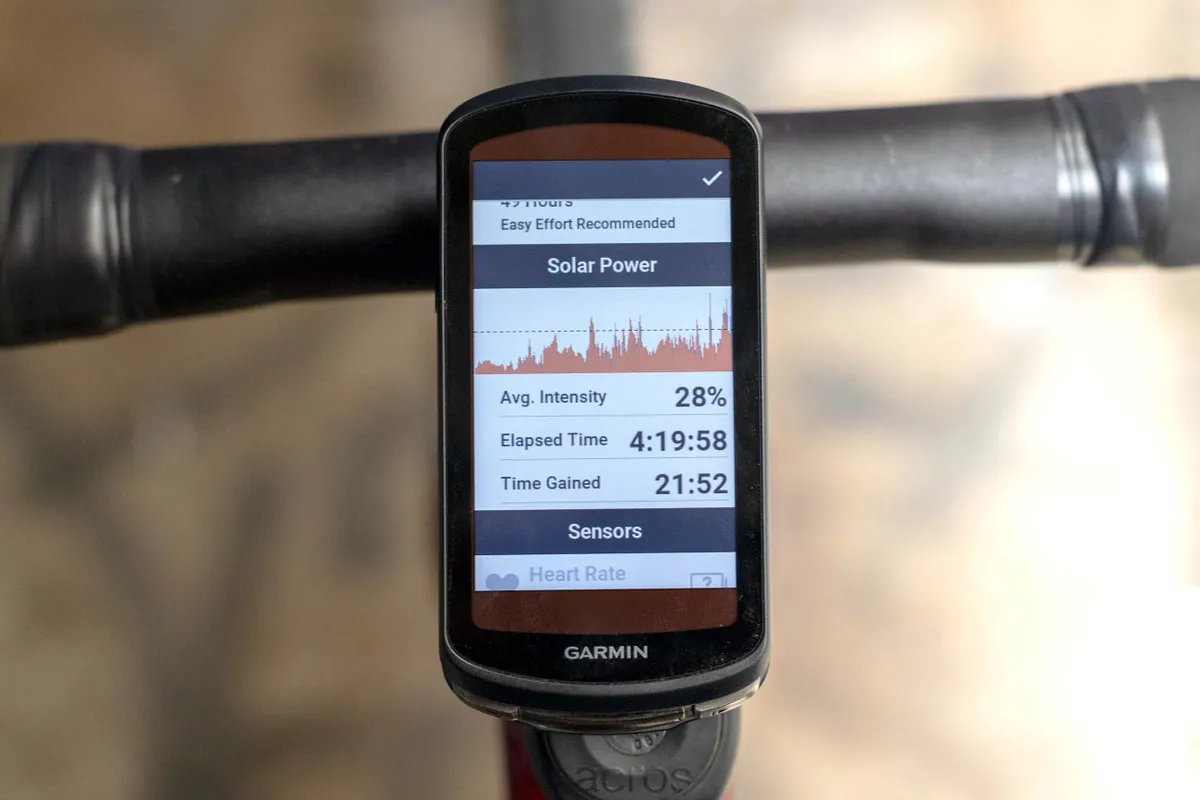
If you like to see a lot of data as you ride, the larger screen of the Edge 1030 makes it easier to read if you want to see the maximum of 10 data fields all three units can display.
On the other hand, the Edge 1030 weighs around 50 per cent more than the smaller units. For this reason, many professional road riders stick to Garmin’s smaller devices. It’s also a chunky piece of kit and takes up a lot of bar real estate. It may not even fit on some out-front mounts.
If you regularly test the limits of the battery life of your cycling computer, the Edge 1040 Solar may be the unit for you. It has a significantly longer battery life and collects solar charge more efficiently than the Edge 540 or Edge 840. But with all three bike computers offering such a range of functionality, there’s little else to help you choose between them beyond size, touchscreen and price.
